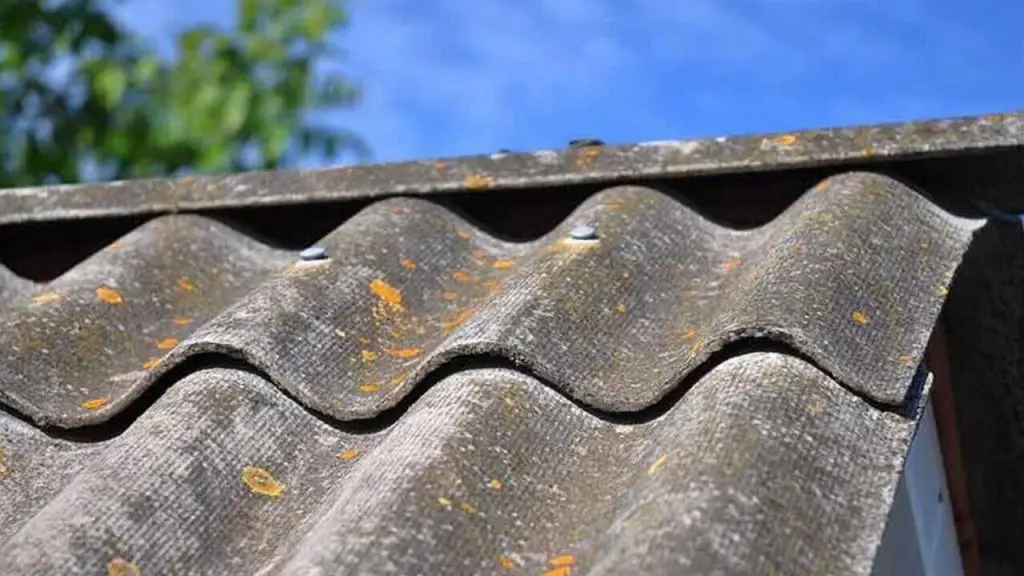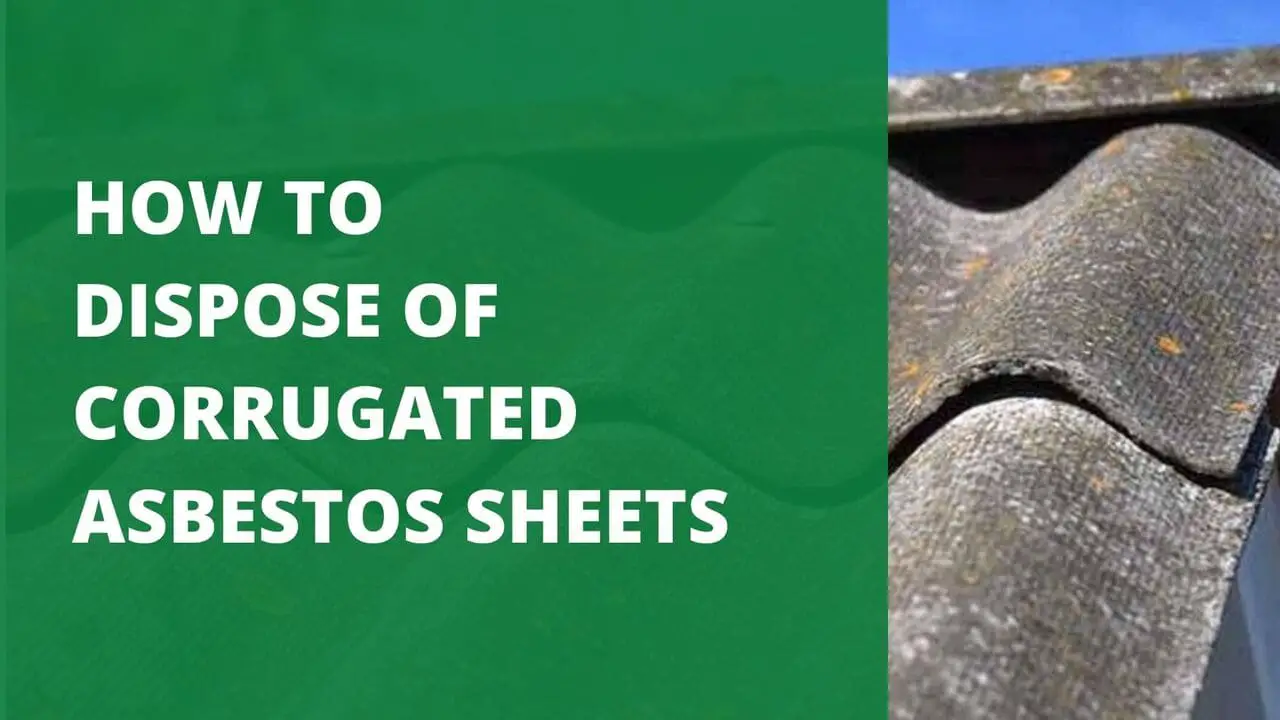If you have asbestos sheets on your property and are not sure how to dispose of corrugated asbestos sheets, don’t worry – we’re here to help.
In this blog post, we will discuss how to safely dispose of asbestos sheets. It is important to take precautions when dealing with asbestos, as it can be harmful if inhaled. Follow these steps to ensure a safe and successful asbestos sheet disposal.
What is Asbestos Sheet?
The asbestos sheet is a type of construction material that contains asbestos fibers. Asbestos is a naturally occurring mineral once used in many industries because of its heat-resistant properties. However, if inhaled, it has been linked to health problems, such as cancer. If you suspect that your property contains asbestos sheets, it is important to have it tested by a professional before taking any action.

Types of Asbestos Disposal
There are two main types of asbestos disposal:
1. On-site
On-site disposal is when the asbestos sheets are removed from your property and taken to an approved landfill site.
2. Off-site
Off-site disposal is when the asbestos sheets are taken to a special facility for treatment before being disposed of at an approved landfill site. The type of disposal you choose will depend on the number of asbestos sheets you have and their condition.
How to Dispose of Corrugated Asbestos Sheets? A Guide for Householders
If you’re unlucky enough to discover asbestos in a property, getting rid of it is relatively simple if you know what you’re doing. Below are our top tips on how to dispose of it safely.
1. Follow safety protocols
When disposing of asbestos sheets, it is important to follow all safety protocols to protect yourself and others from exposure. Always wear protective clothing, such as a respirator, gloves, and long-sleeved shirts and pants.
Wet down the asbestos sheets before removing them to prevent dust from becoming airborne. Once the sheets are removed, double-bag them in heavy-duty plastic bags and seal them tightly. Label the bags with “Asbestos – Do Not Open” and dispose of them at an approved landfill site.
2. Hire a professional
If you have a small amount of asbestos sheeting that is in good condition, you may be able to dispose of it on your own.
However, if you have a large amount of asbestos sheeting or are in poor condition, it is best to hire a professional to handle the disposal. Professional asbestos removal companies are trained to remove and dispose of asbestos materials safely.
3. Weigh up the cost
The cost of disposing of asbestos sheets can vary depending on the method you choose and the company you hire. On-site disposal is typically cheaper than off-site disposal, but it may not be an option if you have a large amount of asbestos sheeting.
Hiring a professional to handle the removal will likely be the most expensive option, but it is the safest and most effective way to ensure that the job is done correctly.
4. Could you take it to the tip yourself?
If you have access to a car, bringing the bagged asbestos inside and driving it to your local landfill is one of the most cost-effective and easy methods to get rid of asbestos. However, before doing so, you should verify with your local authority.
Some town tips prohibit asbestos disposal and recommend that the municipality or a private contractor remove it. But certain authorities offer guidelines on transporting it, including specific quantities/items.
5. Use a specialist asbestos removal contractor
The main difference between utilizing a professional contractor and the council’s collection/disposal service is speed and cost. The fees of private contractors are likely to be considerably greater, but they will frequently be able to complete a pick-up within a few days, if not the same day.
Although they are not required by law to do so, we strongly advise customers to utilize only Asbestos Removal Contractors Association members. This is the primary trade association. Although being a member of it isn’t necessarily an indication of service quality, it is an assurance of supplier professionalism and dedication to safety.
6. Use asbestos collection service
The municipality or a private contractor provides asbestos removal services. The service is usually free of charge, but there may be a limit on how much asbestos you can dispose of. Check with your local authority to see if this service is available.
The Bottom Line
Asbestos is a dangerous material that trained professionals should only handle. If you have asbestos on your property, follow all safety protocols and dispose of it at an approved landfill site. Hiring a professional to handle the removal and disposal is the safest and most effective way to ensure that the job is done correctly.
FAQs
What is the most cost-effective way to dispose of asbestos sheets?
The most cost-effective way to dispose of asbestos sheets is to take them to your local landfill.
What is the safest way to dispose of asbestos sheets?
The safest way to dispose of asbestos sheets is to hire a professional to handle the removal and disposal.
Can I dispose of asbestos sheets myself?
You can dispose of asbestos sheets yourself if you have a small amount in good condition.
What is the difference between hiring a professional and using the council’s collection/disposal service?
The main difference between hiring a professional and using the council’s collection/disposal service is speed and cost. The fees of private contractors are likely to be considerably greater, but they will frequently be able to complete a pick-up within a few days, if not the same day.
How much asbestos can I dispose of at once?
There is usually a limit on how much asbestos you can dispose of at once. Check with your local authority to see if this service is available.
What are the consequences of disposing of asbestos improperly?
Disposing of asbestos improperly can result in serious health problems for you and those around you. Asbestos fibers can cause lung cancer, mesothelioma, and other respiratory diseases. Make sure to follow all safety protocols when handling asbestos.
Additional Contents:
- HOW TO DISPOSE OF LAUNDRY DETERGENT BOTTLES
- HOW TO SAFELY DISPOSE OF CLEANING PRODUCTS
- HOW TO DISPOSE OF NESPRESSO PODS
- HOW TO DISPOSE OF A LAWN MOWER
- HOW TO DISPOSE OF HAIRSPRAY

